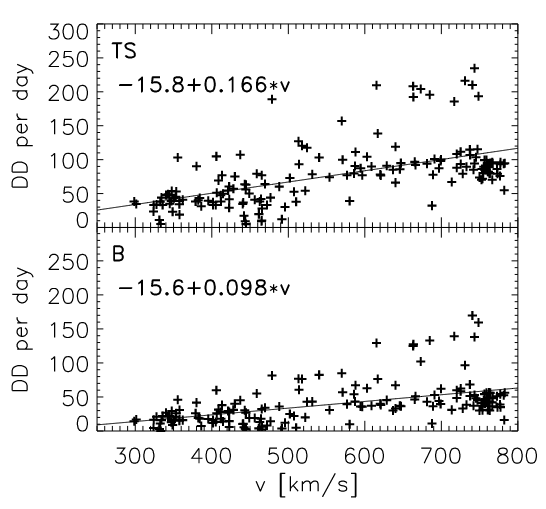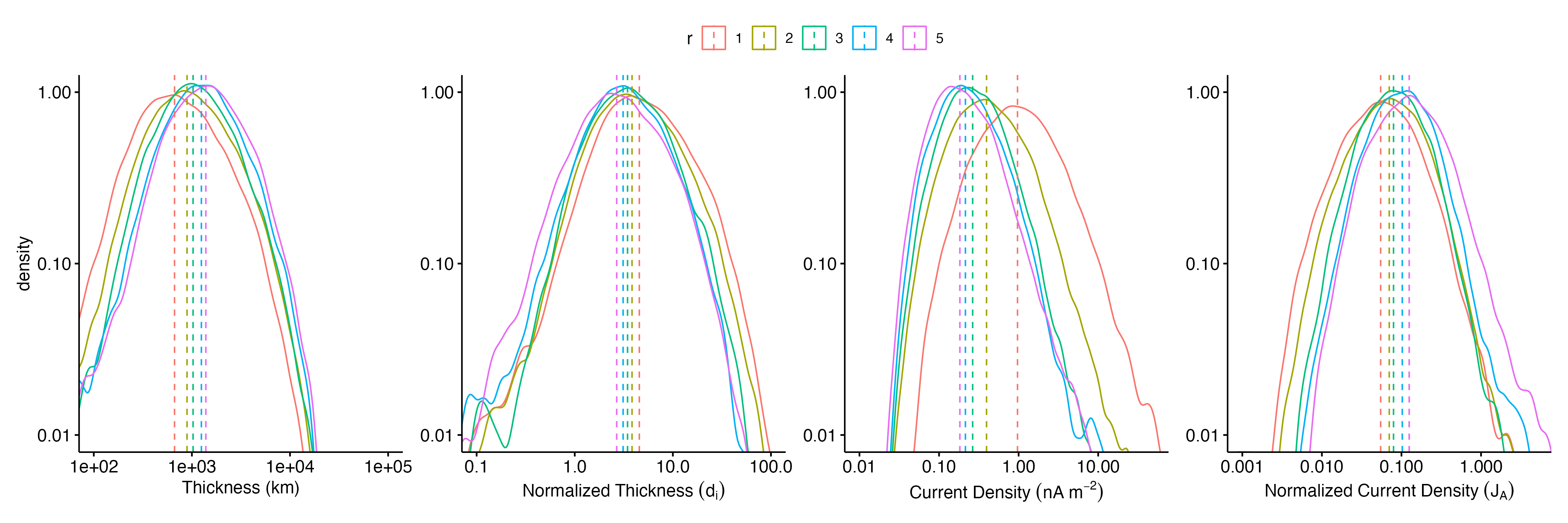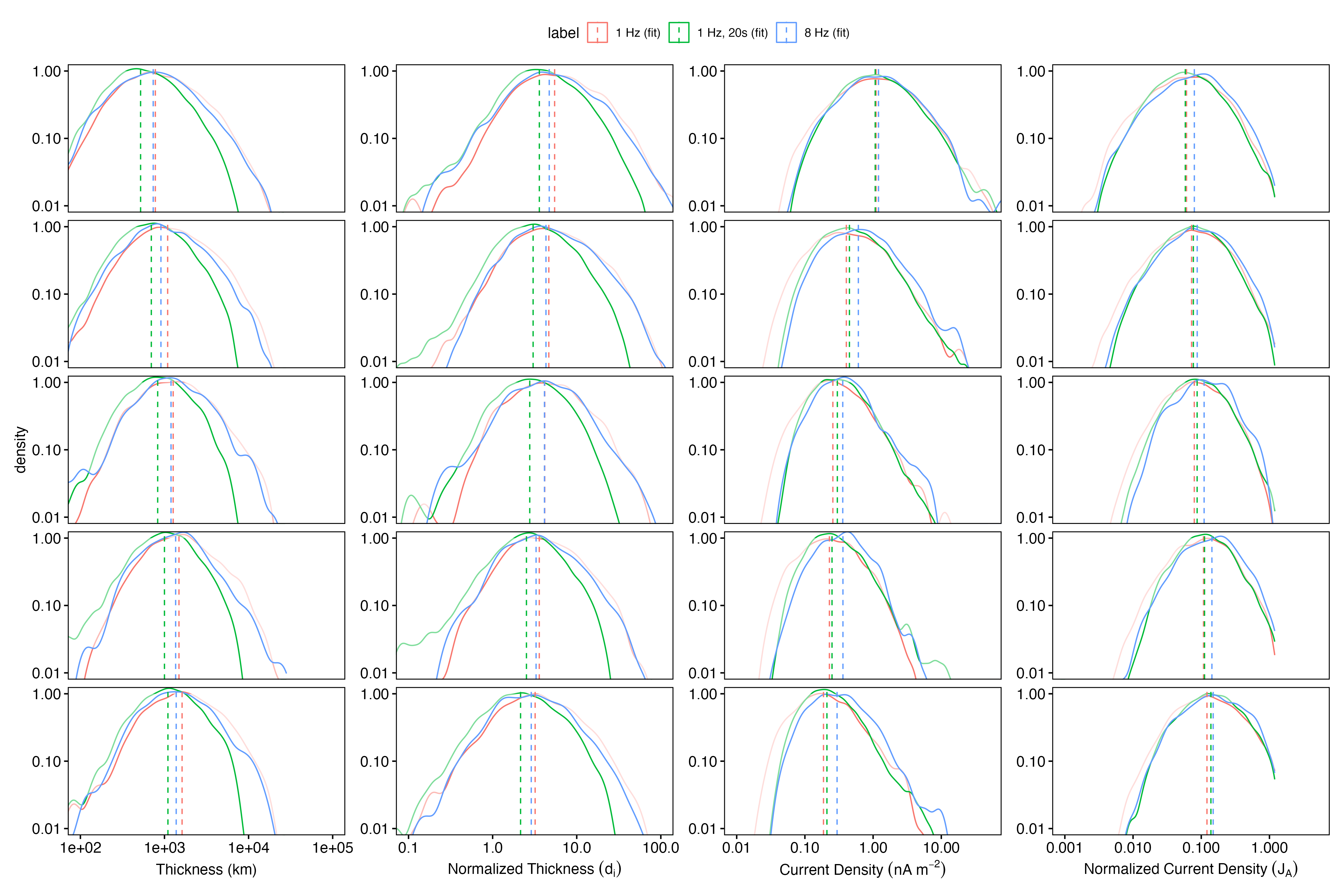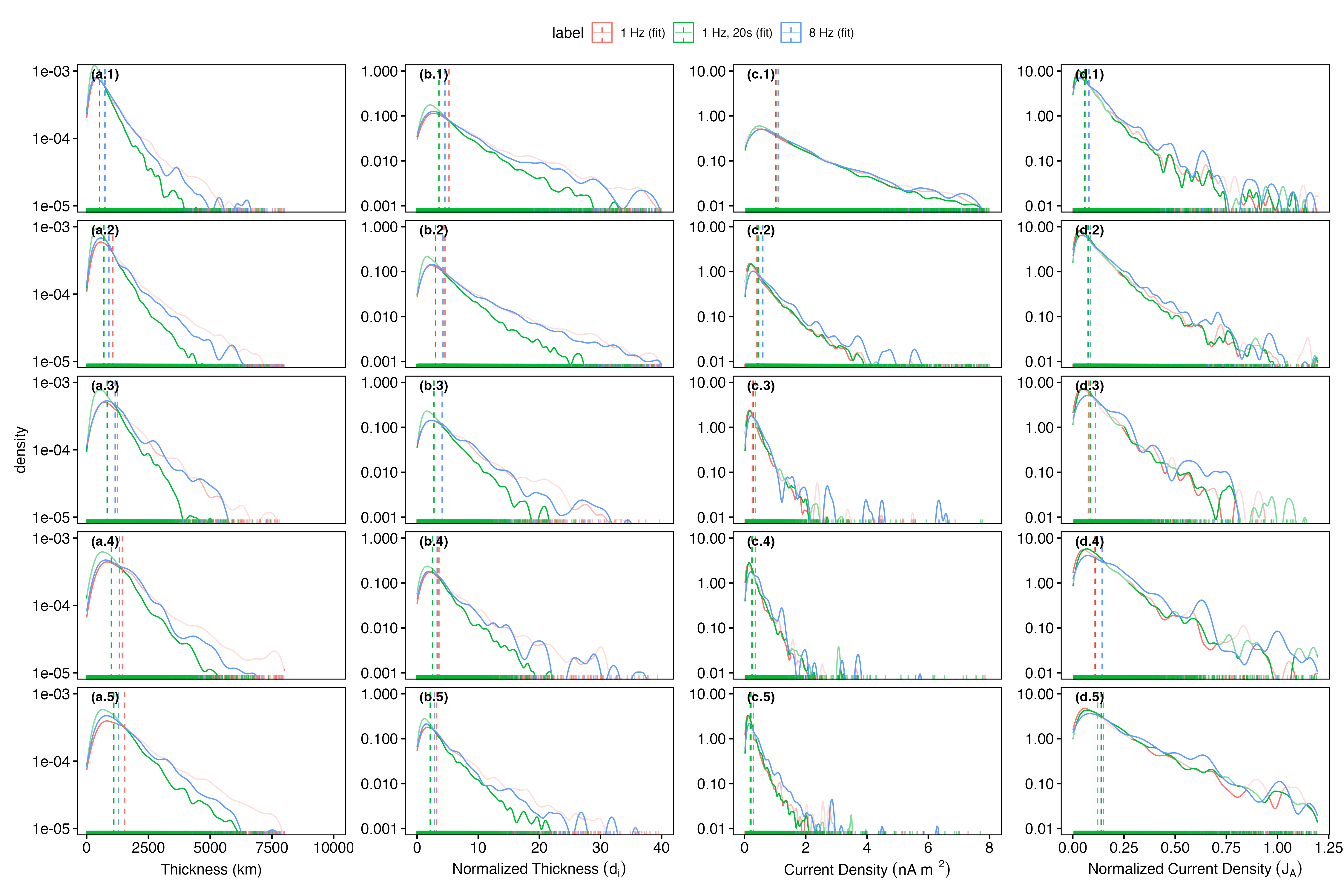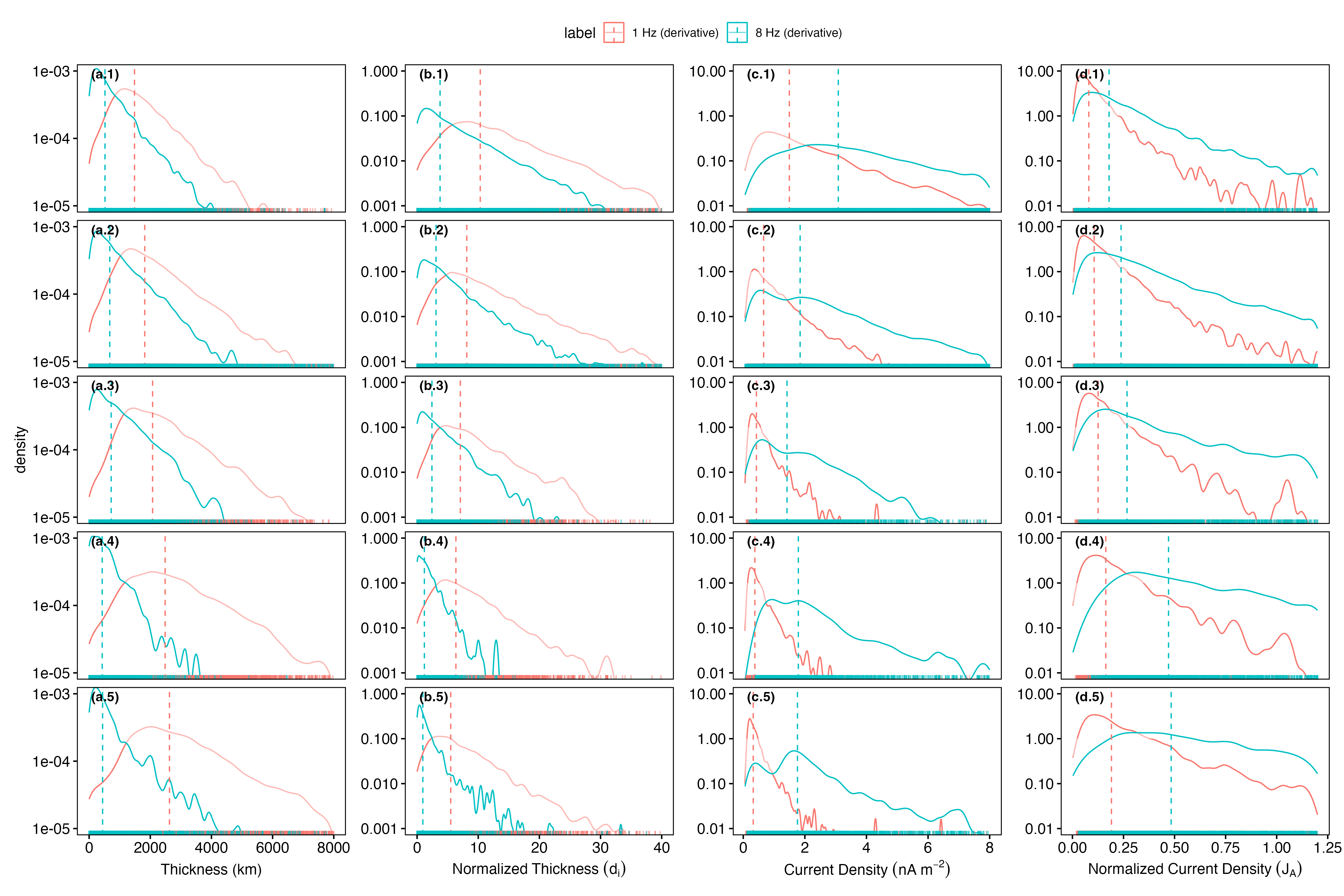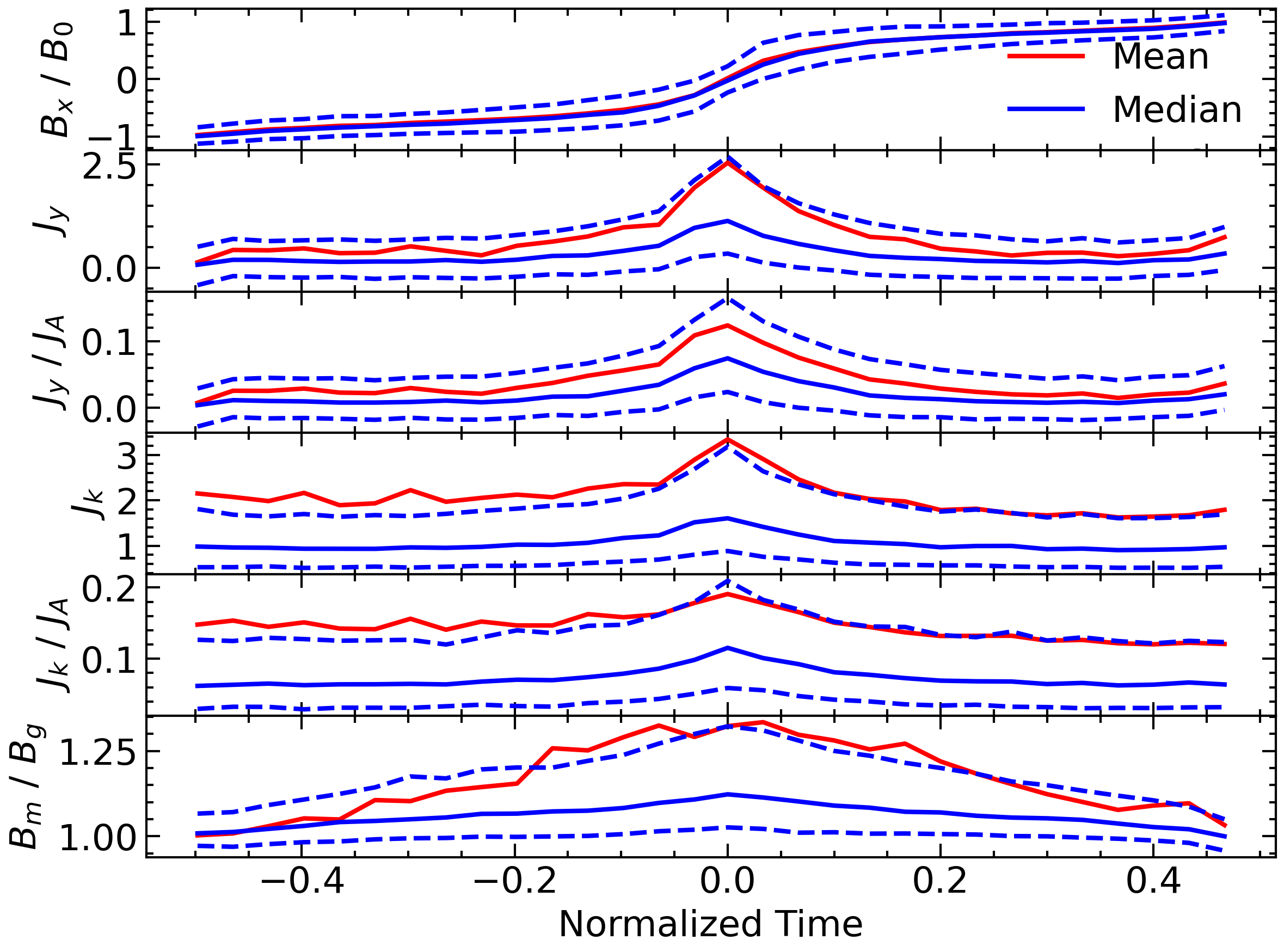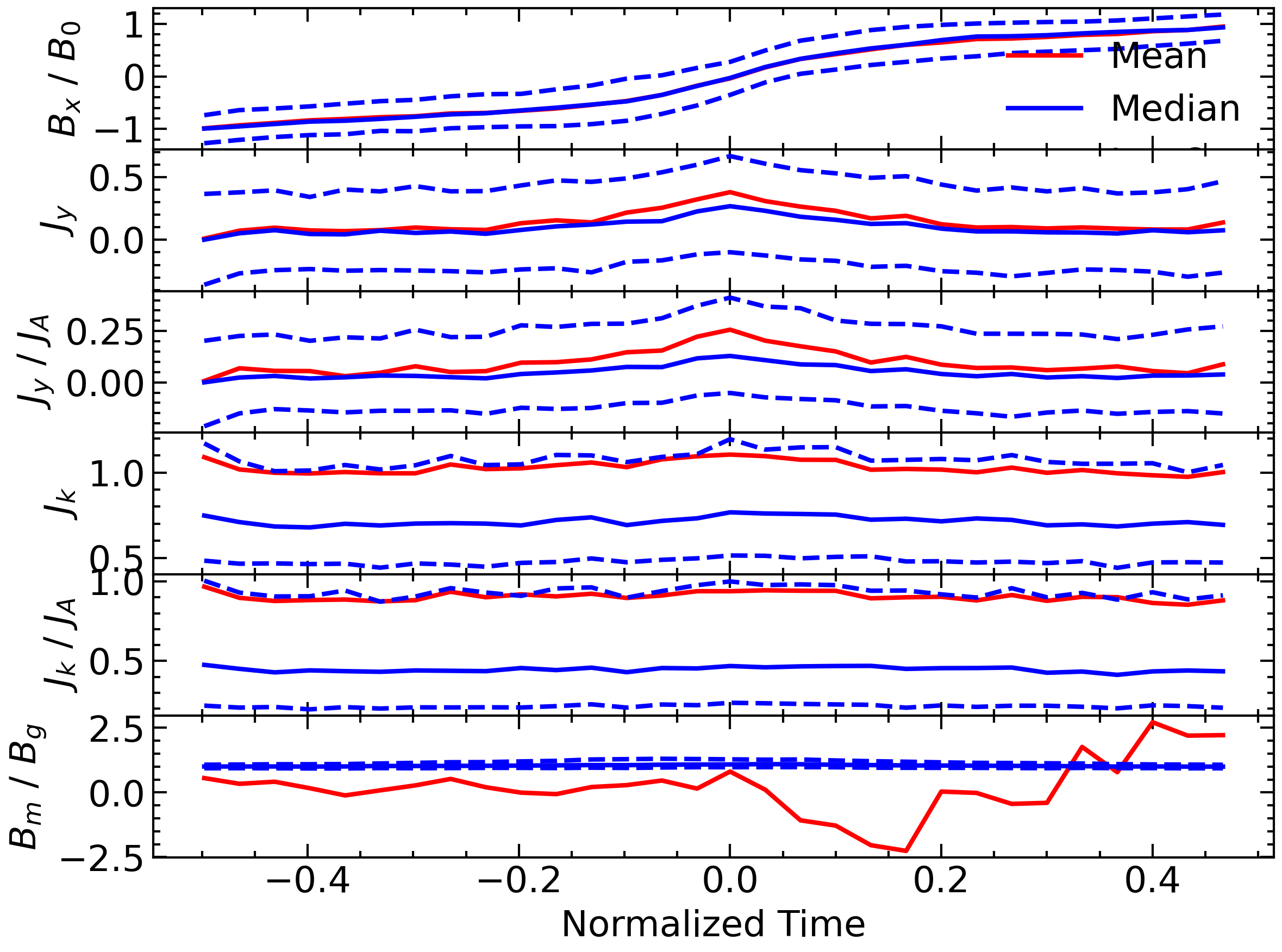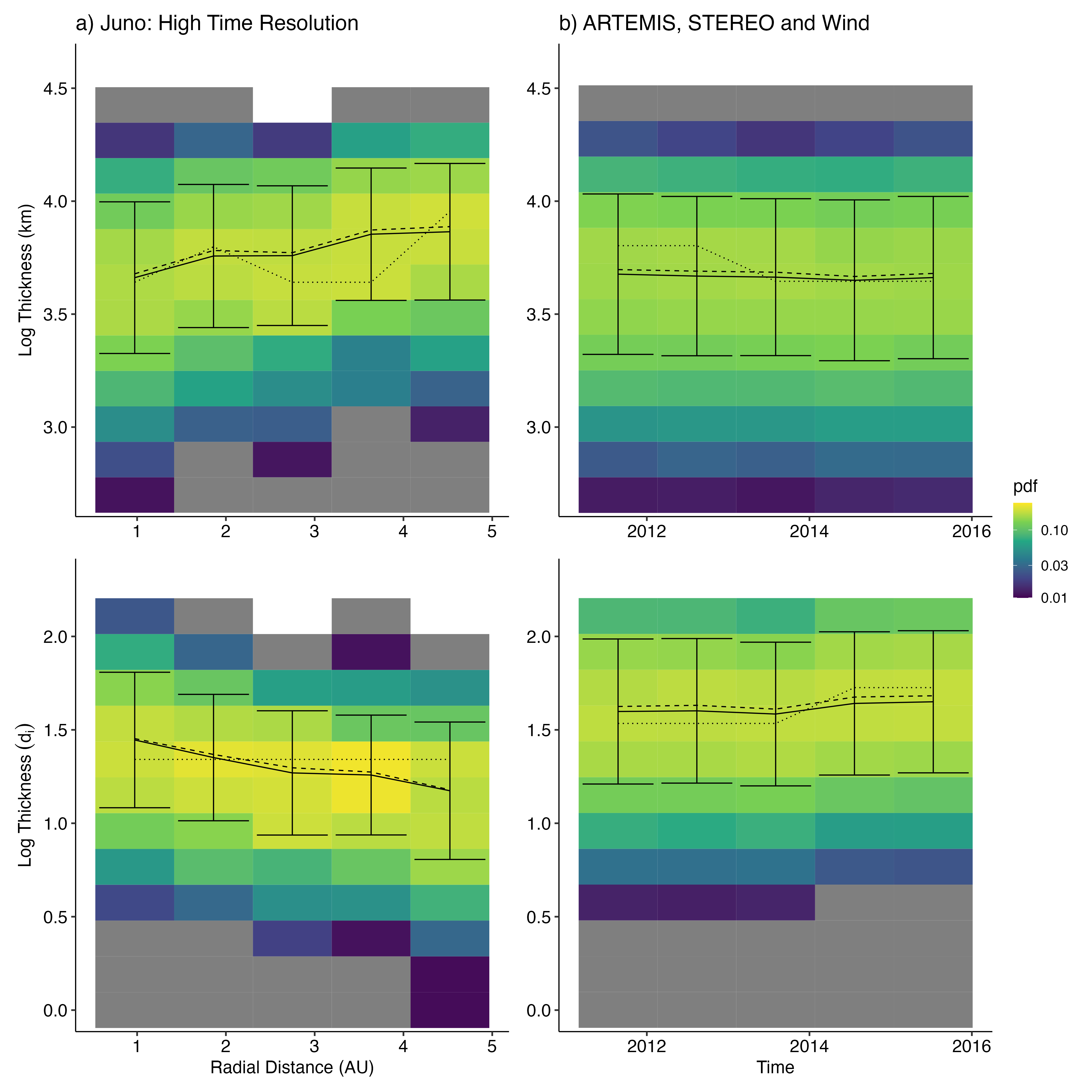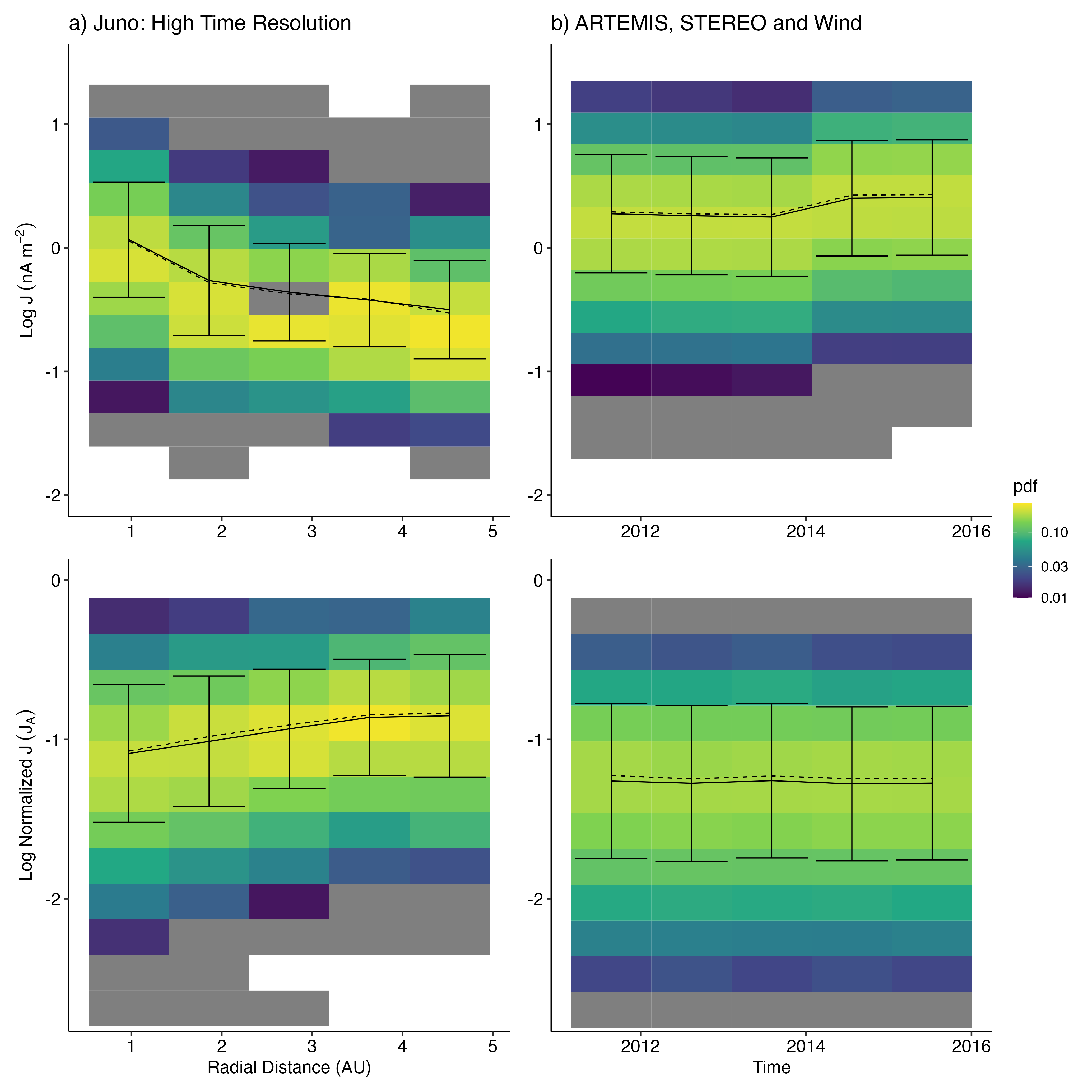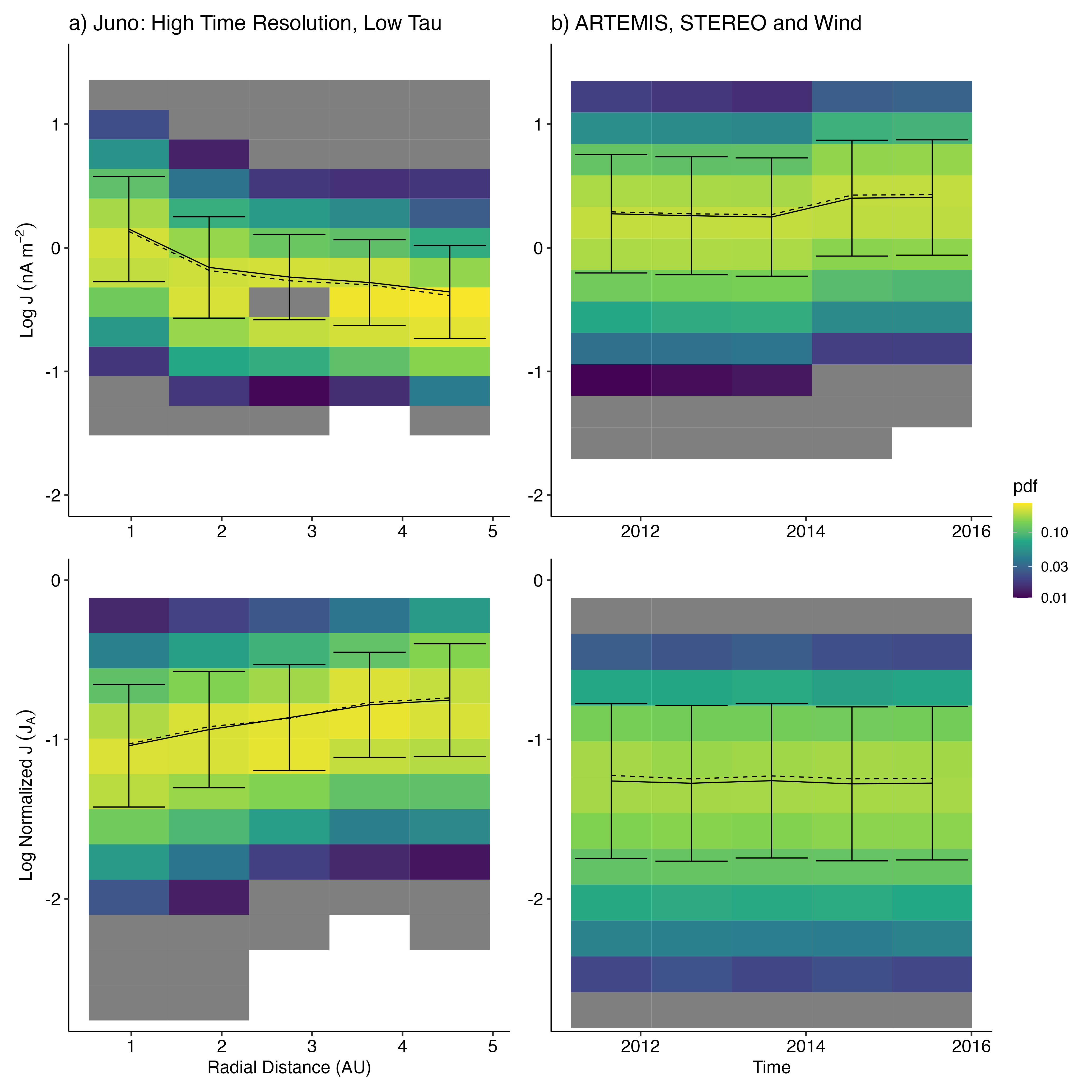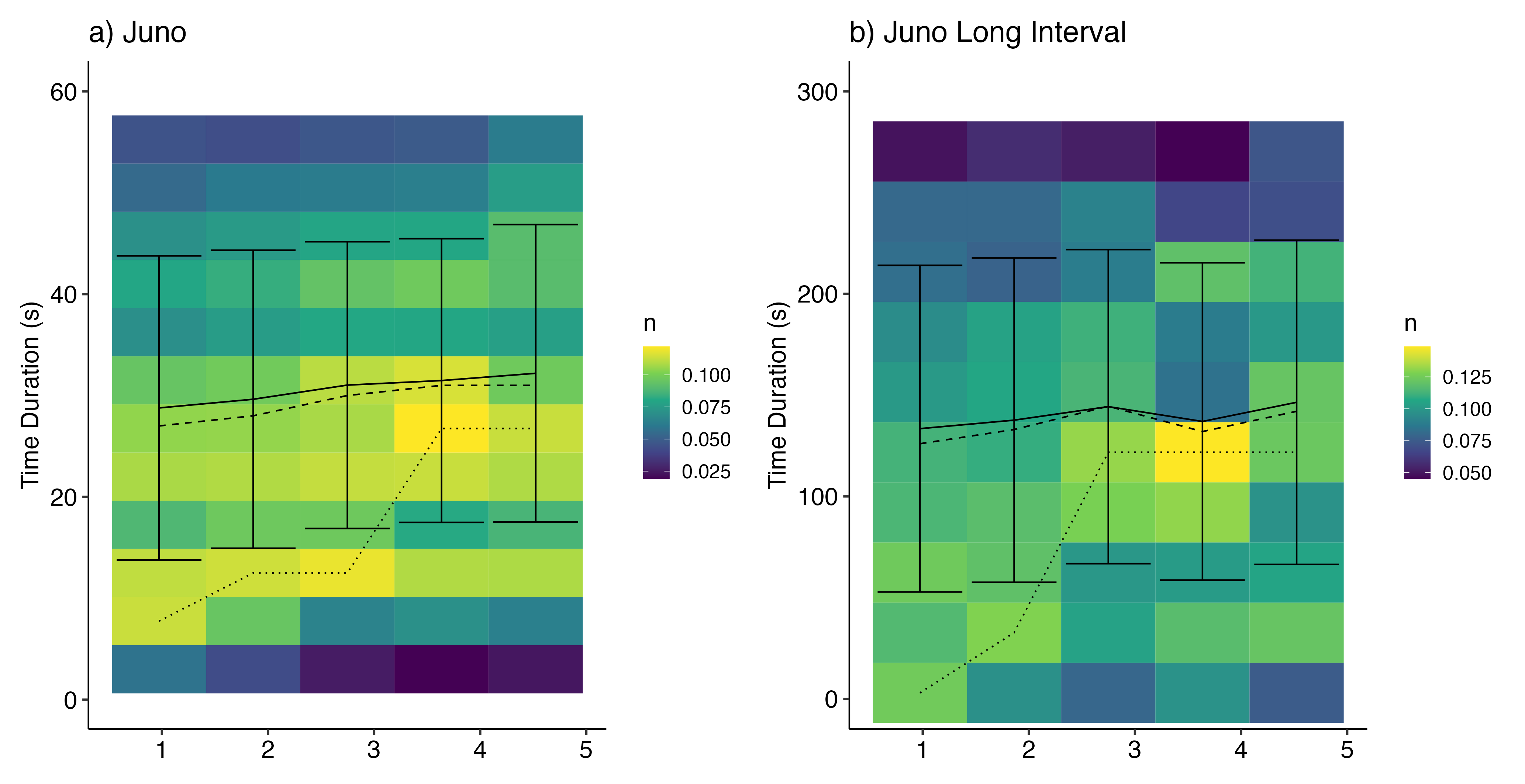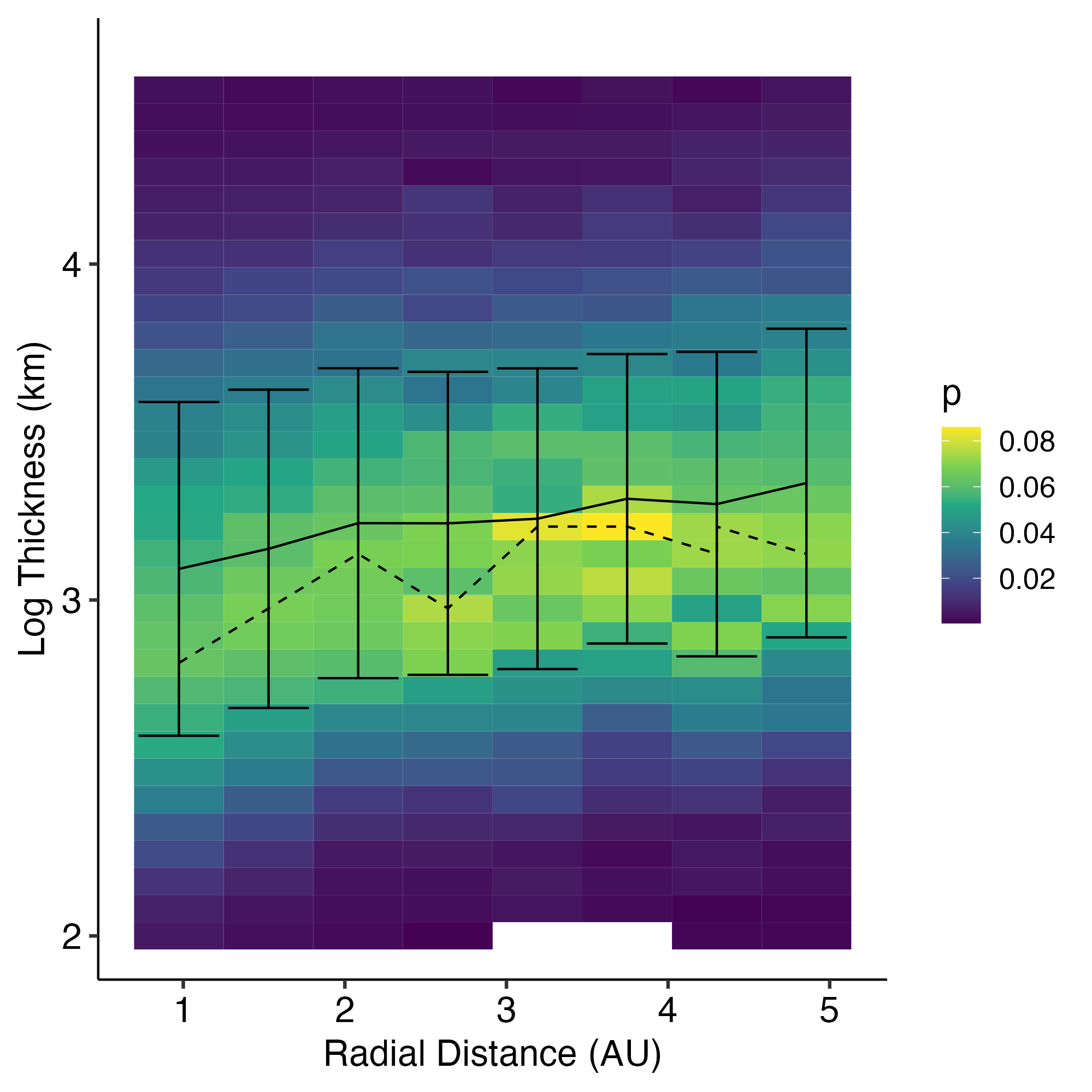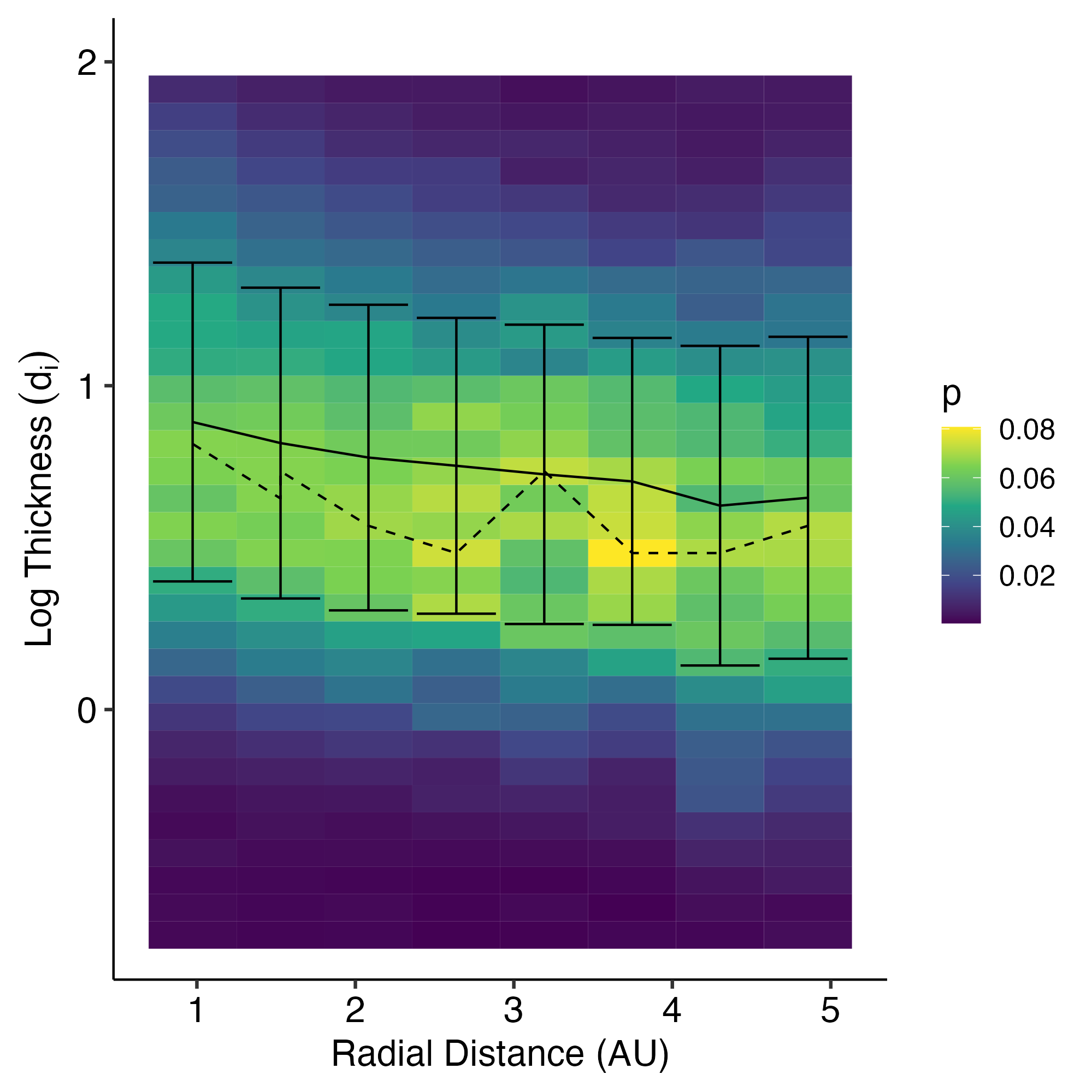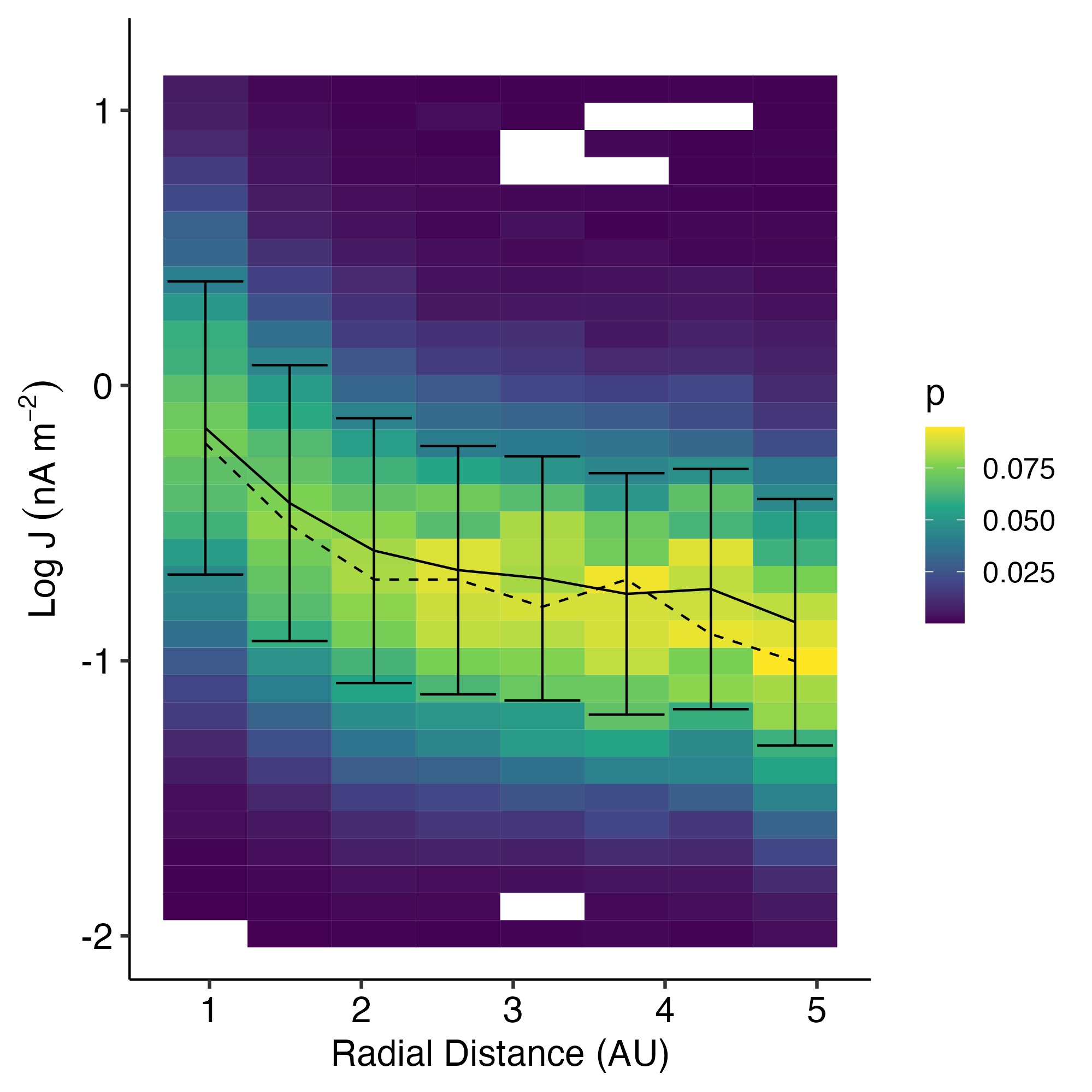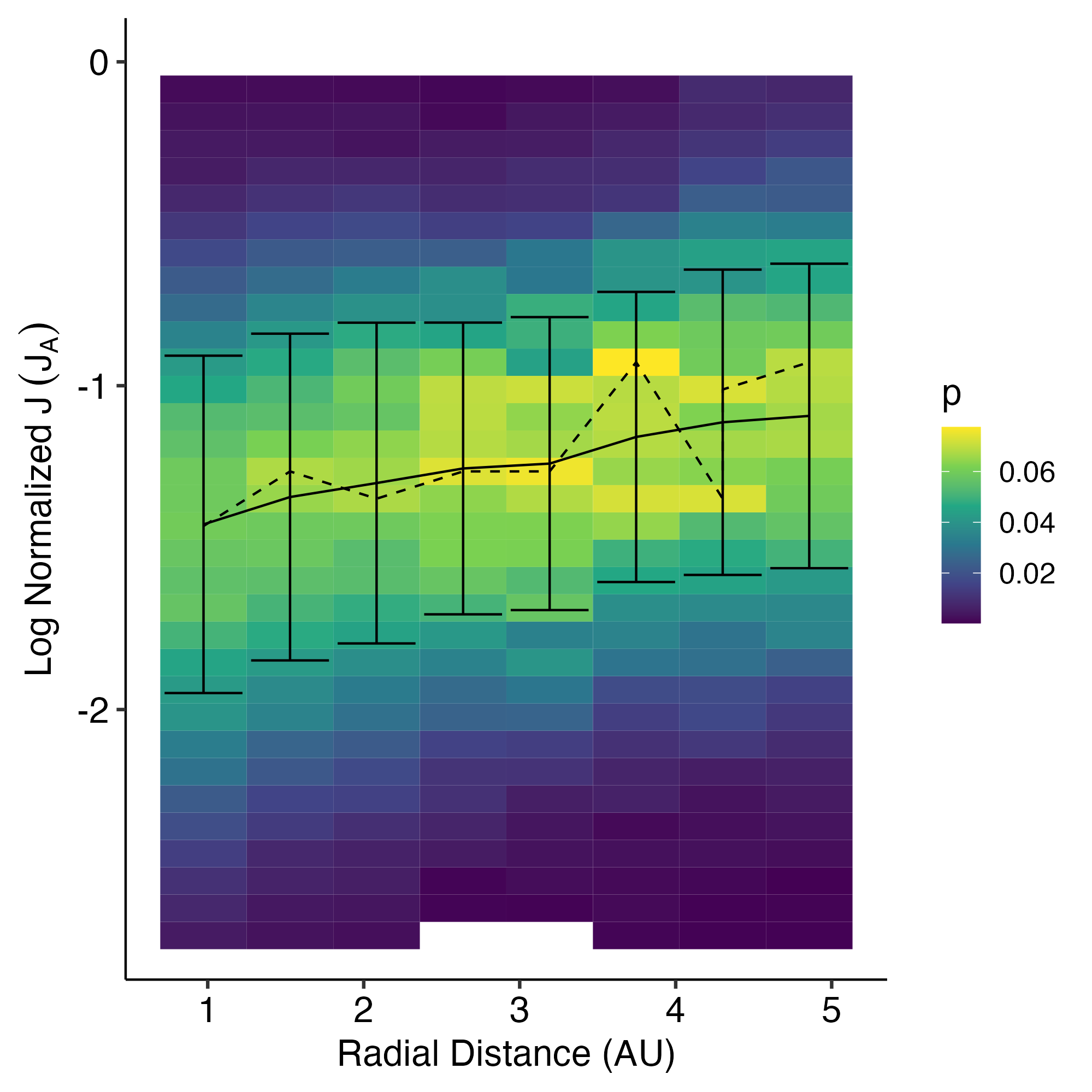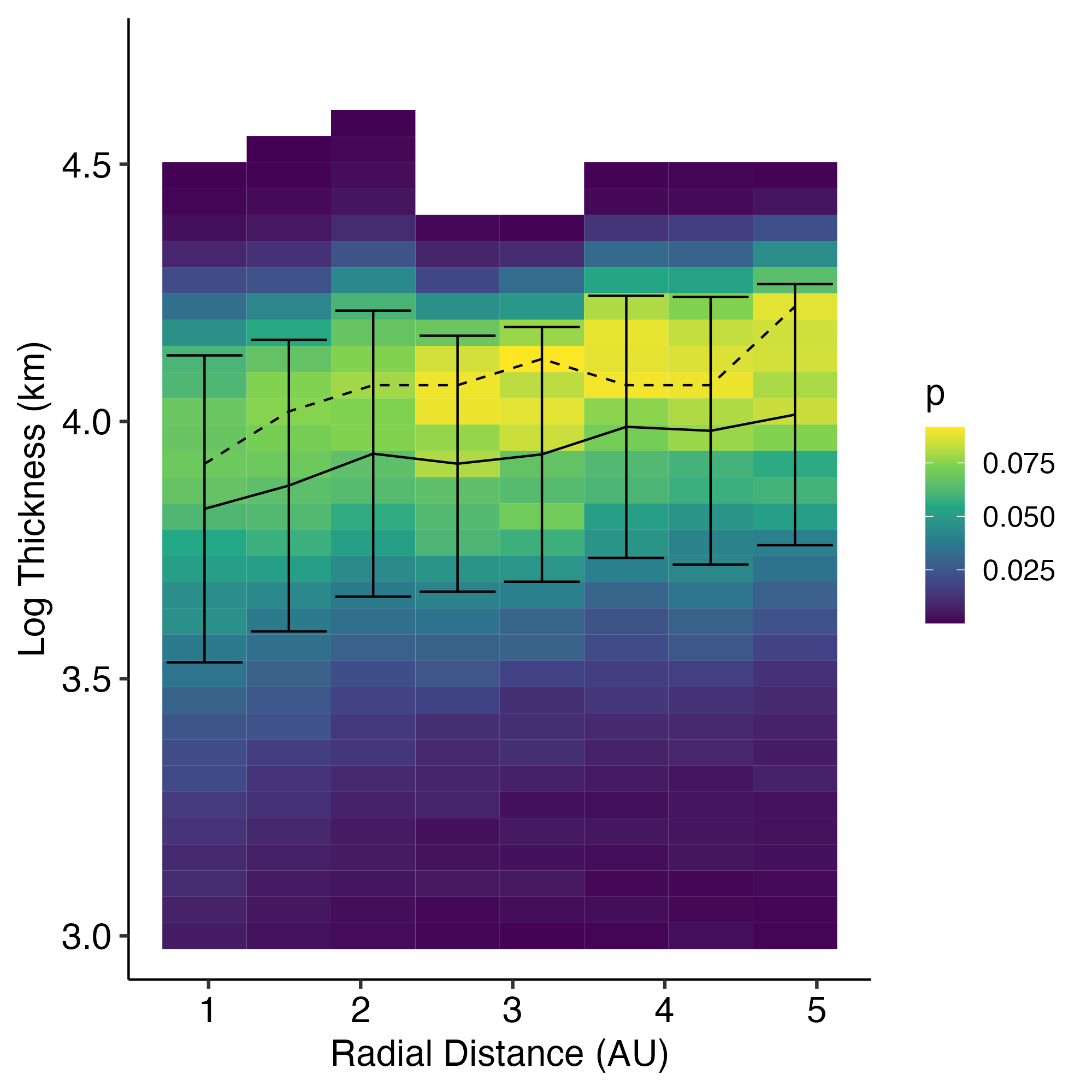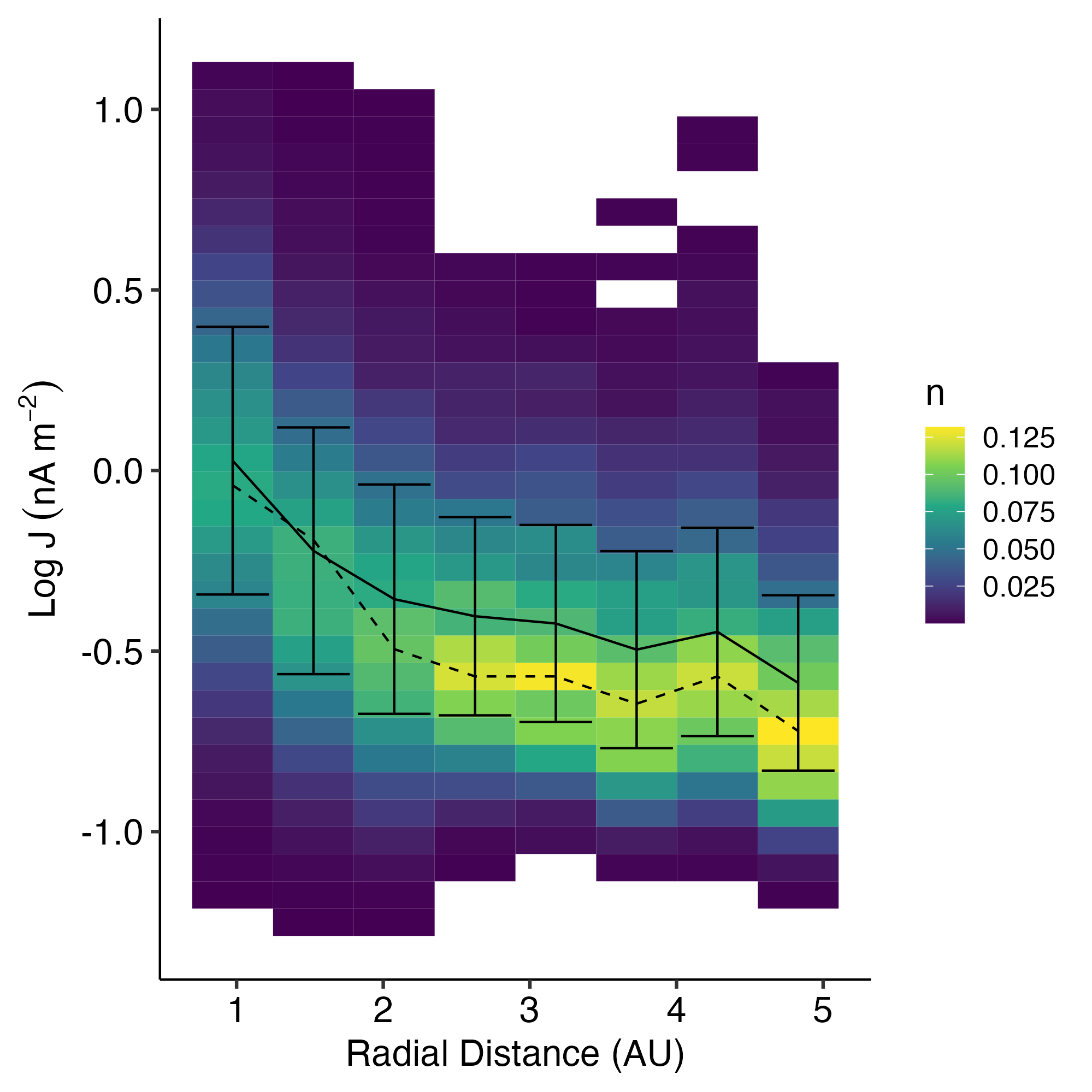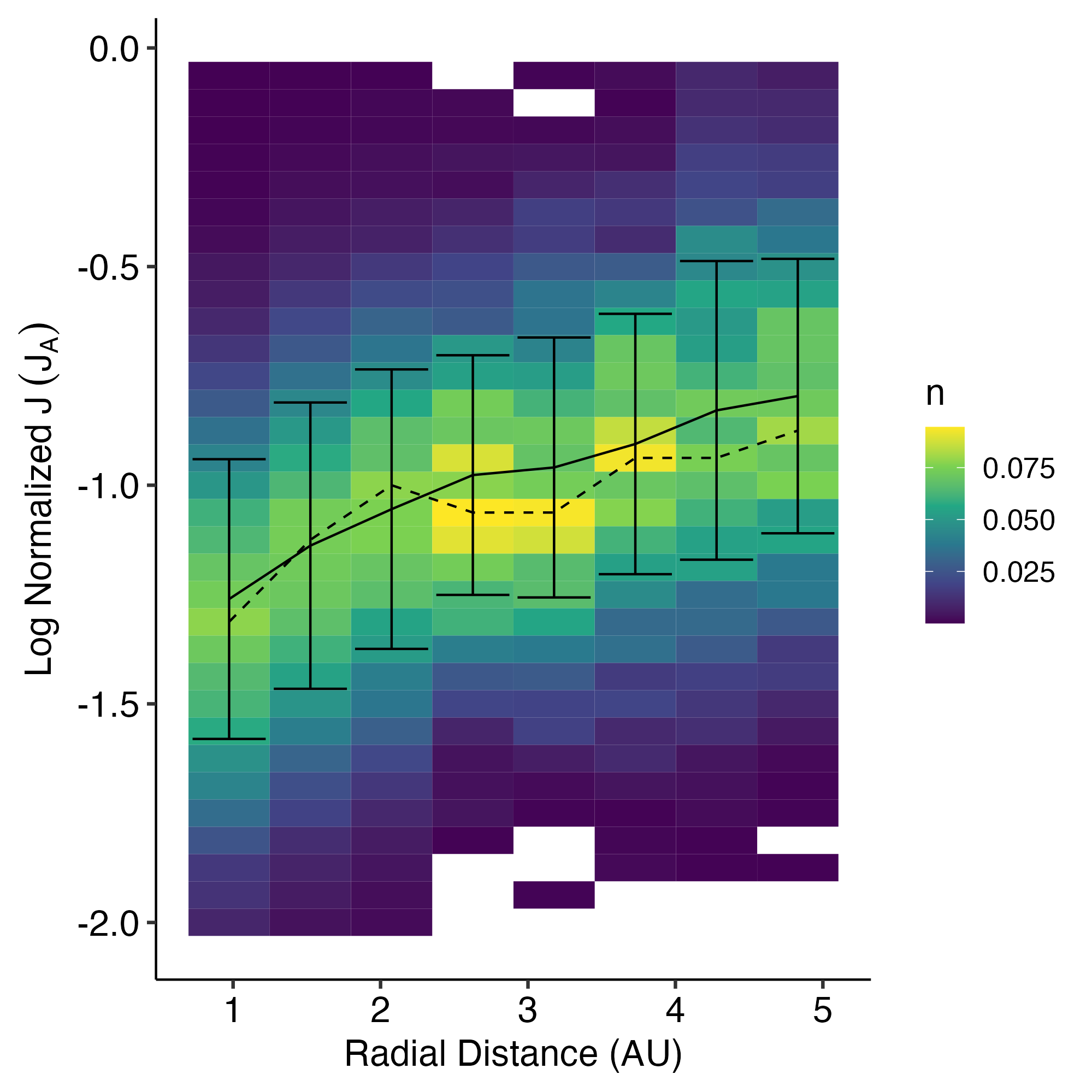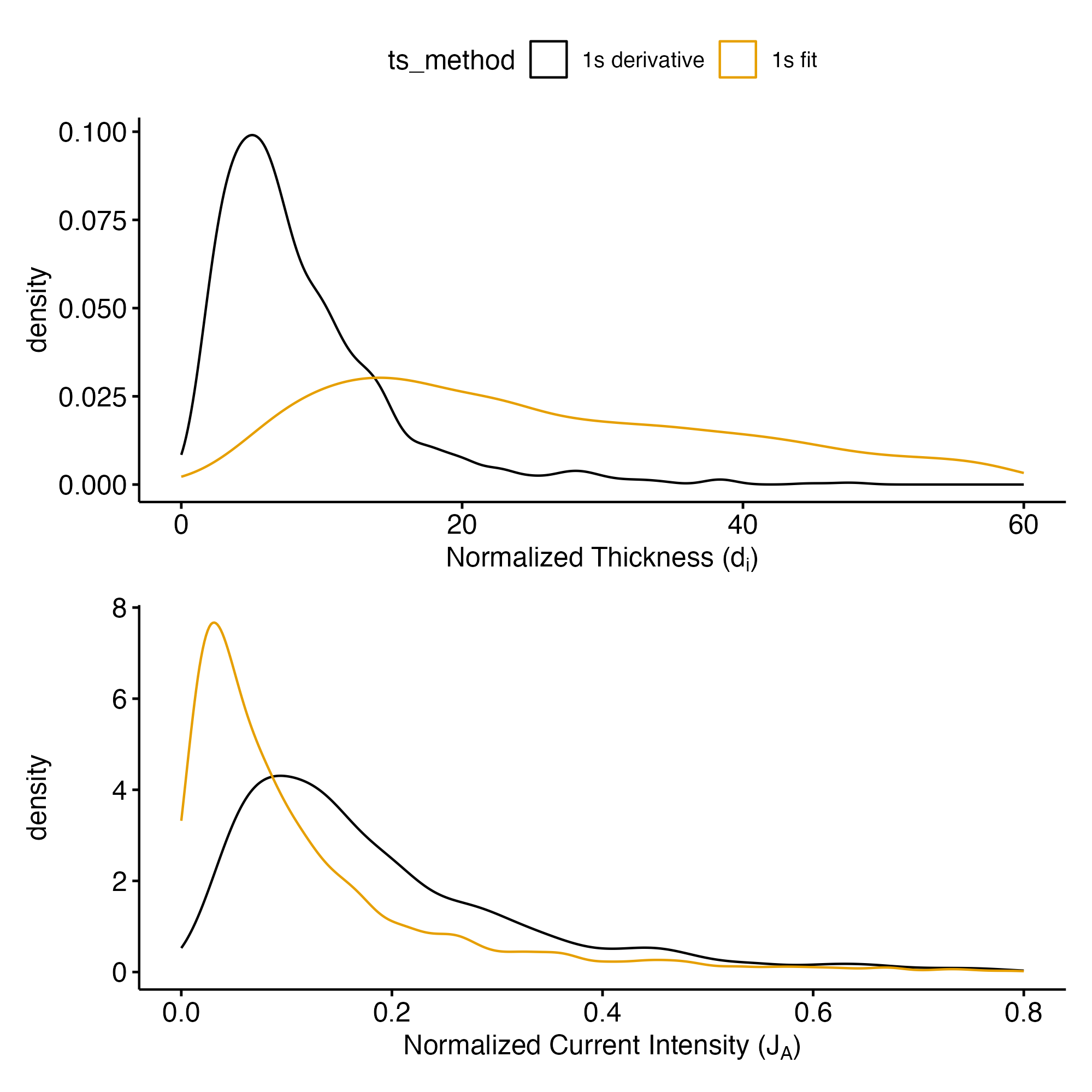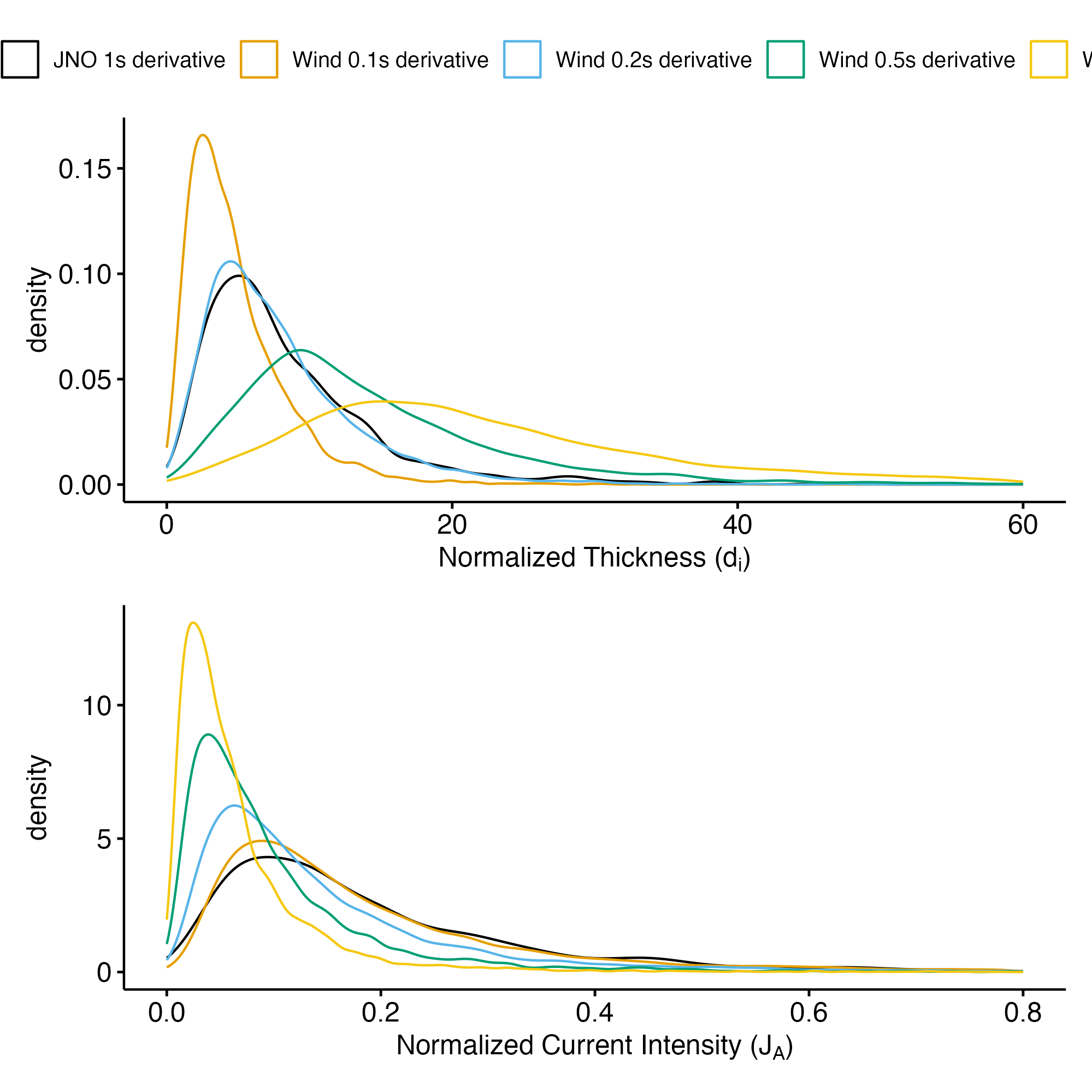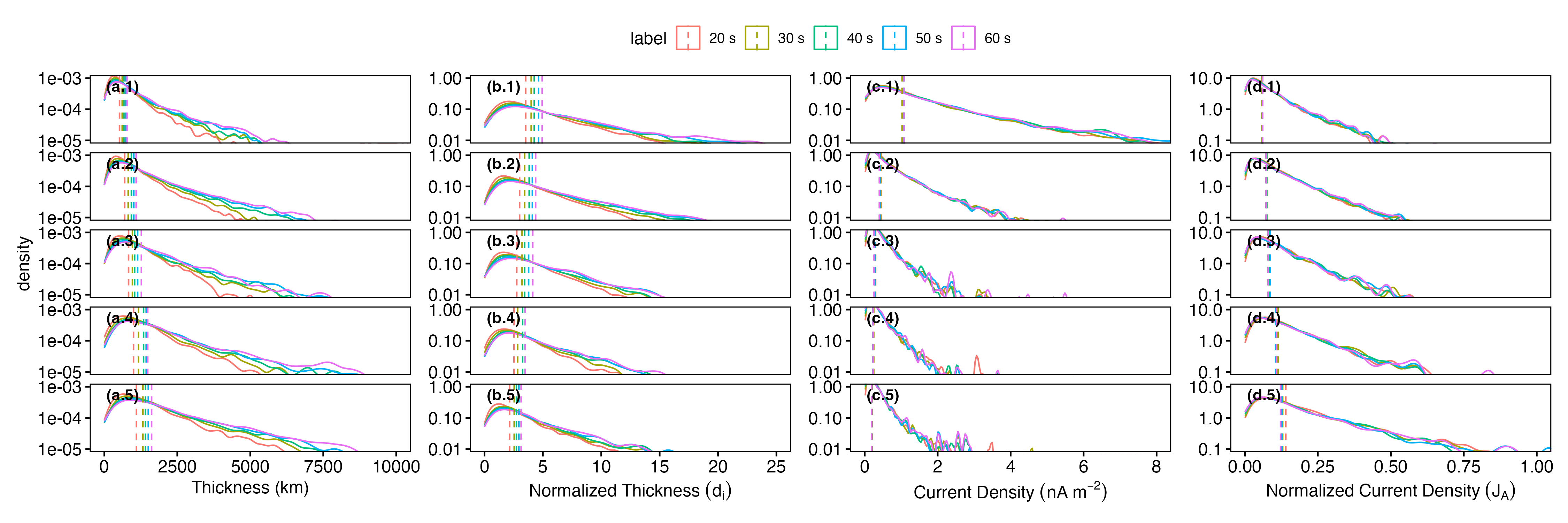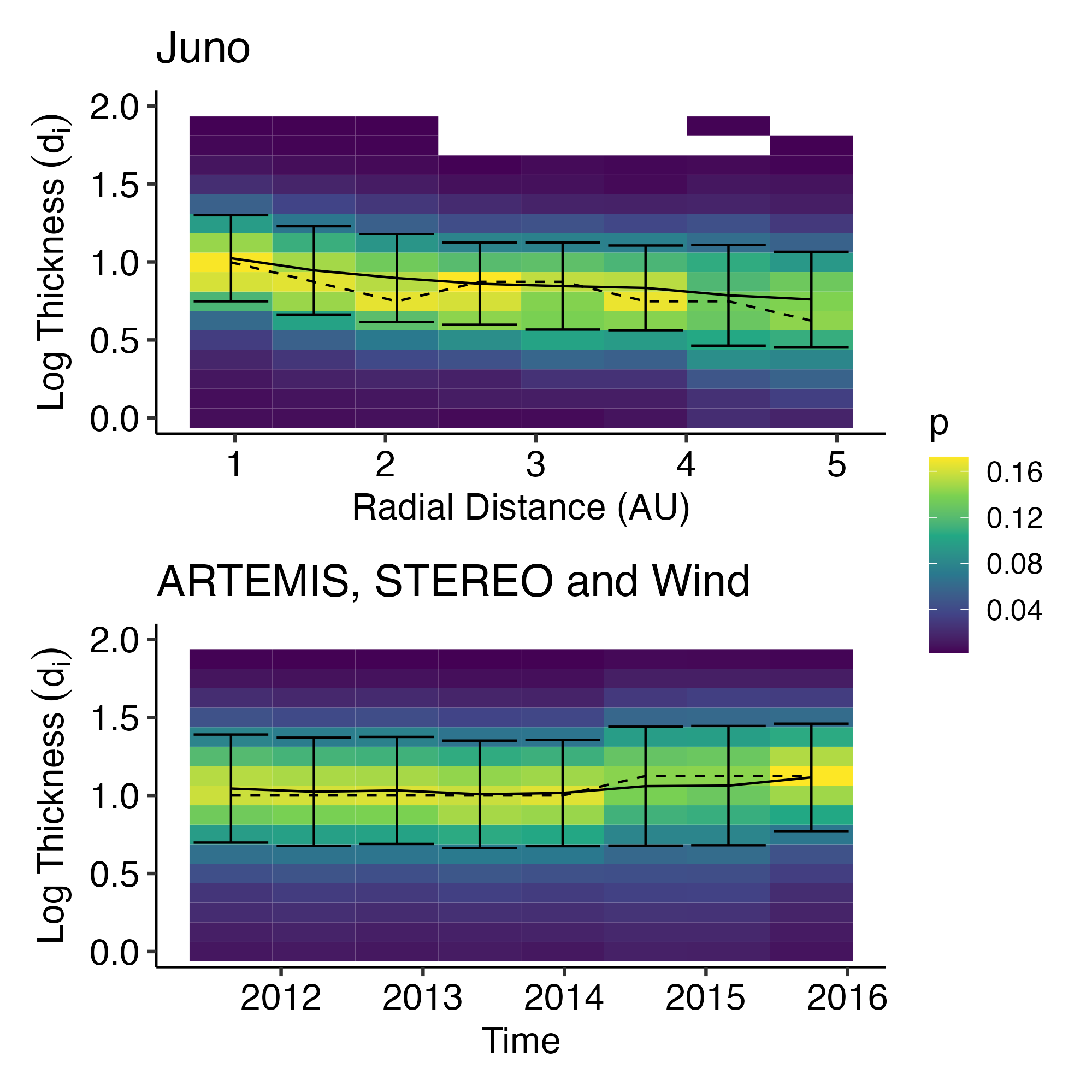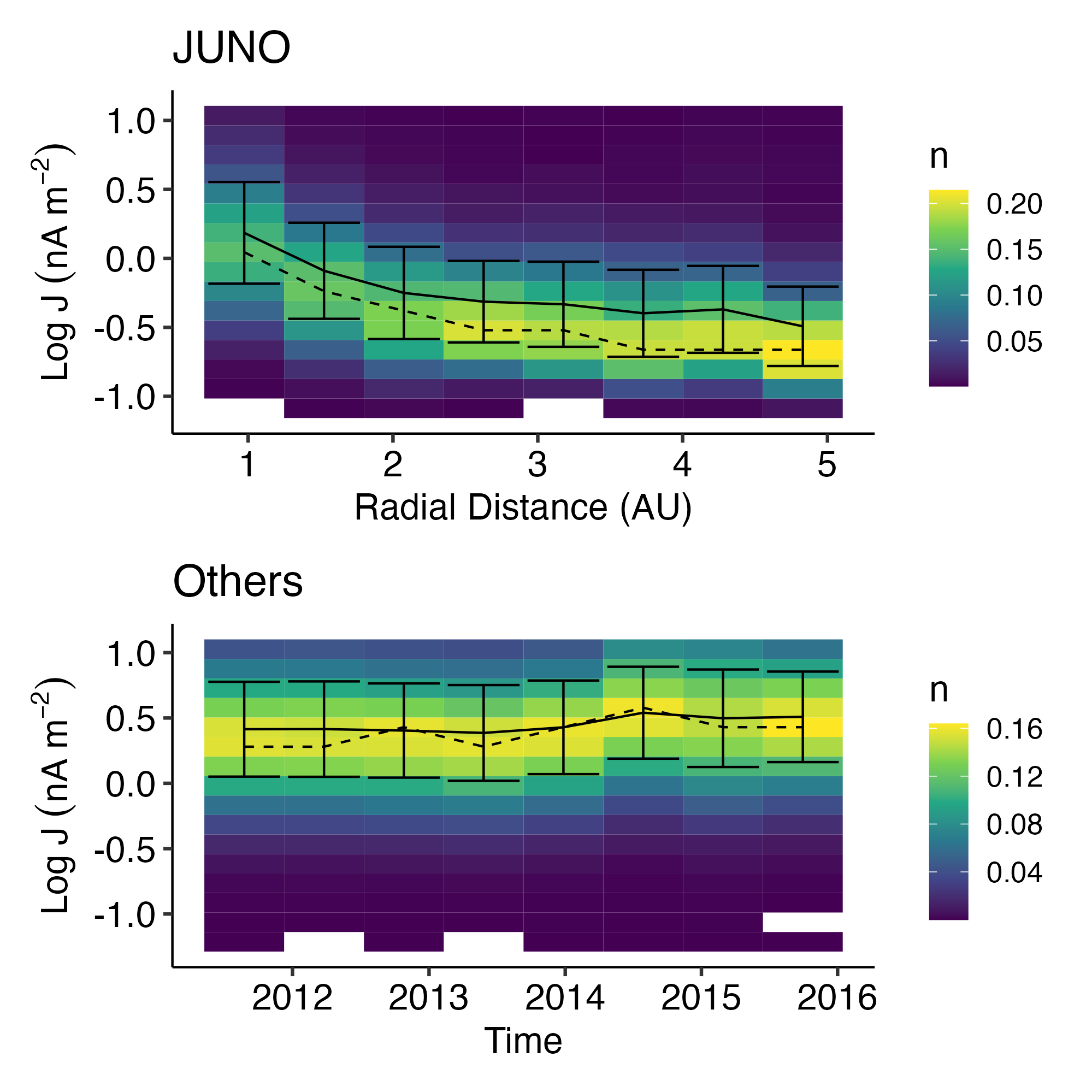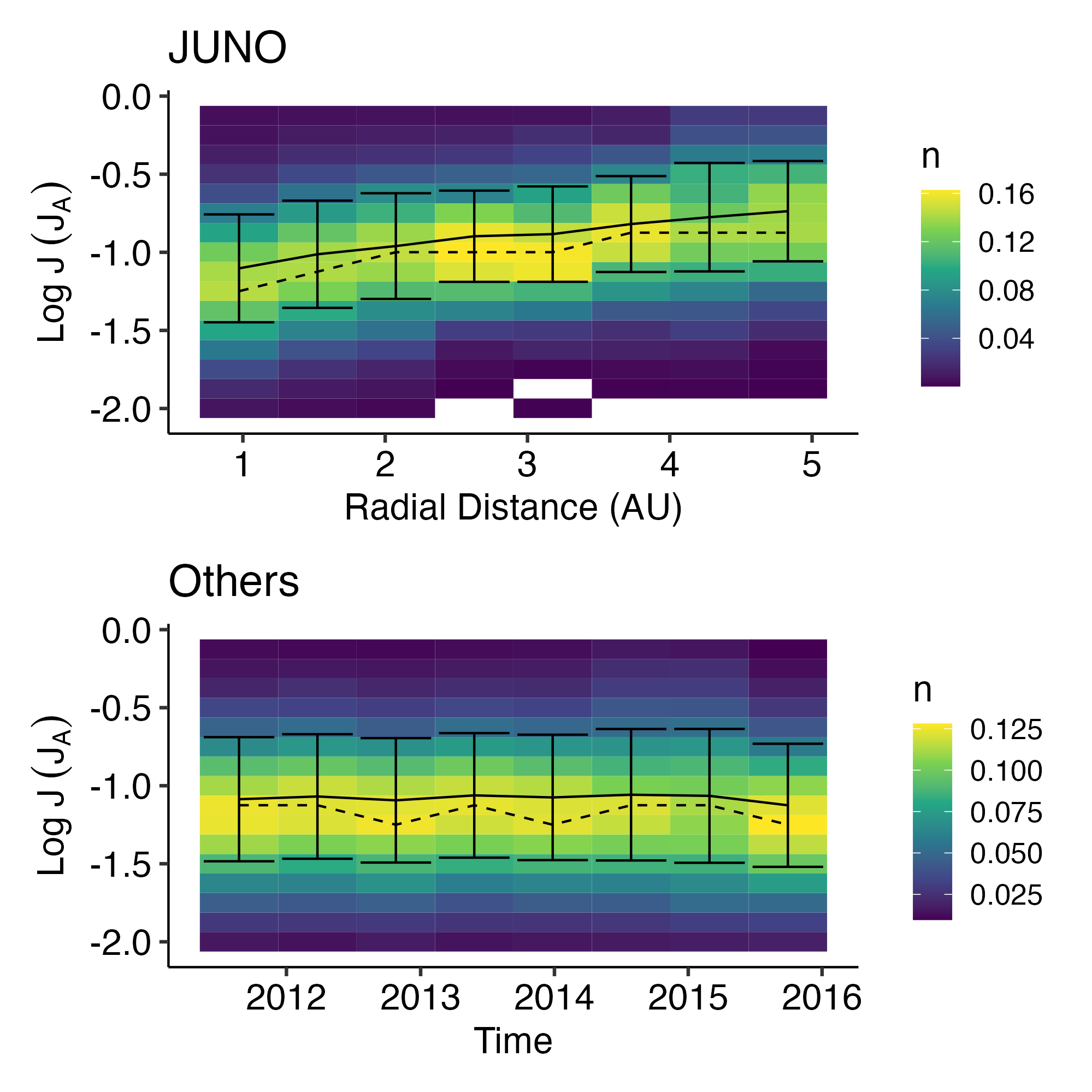Notes
Data
updated_events_JNO_method=fit_tau=0:01:00_ts=0:00:01.arrow and events.JNO.fit.ts_1.00s_tau_60s.arrow are the same data for backward compatibility.
updated_events_Wind_tr=20110825-20160630_method=fit_tau=0:01:00_ts=0:00:00.090909.arrow and events.Wind.fit.ts_0.09s_tau_60s.arrow
Notation
Data Level
l0: unprocessed
l1: cleaned data, fill null value, add useful columns
l2: time-averaged data
Columns naming conventions
v_{x,y,z}orsw_vel_{X,Y,Z}: solar wind plasma speed in the ANY coordinate system, in units of \(km/s\)sw_vel_{r,t,n}: solar wind plasma speed in the RTN coordinate system, in units of \(km/s\)sw_vel_gse_{x,y,z}: solar wind plasma speed in the GSE coordinate system, in units of \(km/s\)sw_vel_lmn_{x,y,z}: solar wind plasma speed in the LMN coordinate system, in units of \(km/s\)v_lorsw_vel_l: abbreviation forsw_vel_lmn_1v_mnorsw_vel_mn(deprecated)
radial_distance: radial distance of the spacecraft, in units of \(AU\)sw_elevation: solar wind elevation angle, in units of \(\degree\)sw_azimuth: solar wind azimuth angle, in units of \(\degree\)b_rtn_{x,y,z}orb_{r,t,n}: magnetic field in the RTN coordinate systemb_gse_{x,y,z}: magnetic field in the GSE coordinate systemmodel_b_{r,t,n}: modelled magnetic field in the RTN coordinate systemstate: 1 for solar wind, 0 for non-solar wind
Updates
09/23/2024
03/15/2024
02/27/2024
02/22/2024
02/20/2024
02/19/2024
02/18/2024
Thickness
Current Density
02/17/2024
Solar Wind Model
Sadly, JUNO does not provide plasma data during the cruise phase, so to estimate the plasma state we will use MHD model.
We are using Michigan Solar WInd Model 2D (MSWIM2D), which models the solar wind propagation in 2D using the BATSRUS MHD solver. Keebler et al. (2022)
Some key points about the model
- Representing the solar wind in the ecliptic plane from 1 to 75 AU
- 2D MHD model, using the BATSRUS MHD solver
- Inclusion of neutral hydrogen (important for the outer heliosphere)
- Inner boundary is filled by time-shifting in situ data from multiple spacecraft
For model validation part, please see JUNO Model Report.
TODOs
Science part
- Analysis
Contribution of discontinuities to the power spectrumValidate model density withVoyager
- Identifaction
- Visualize data gaps
- Features
- Compare with other methods of identifying IDs
-
-
